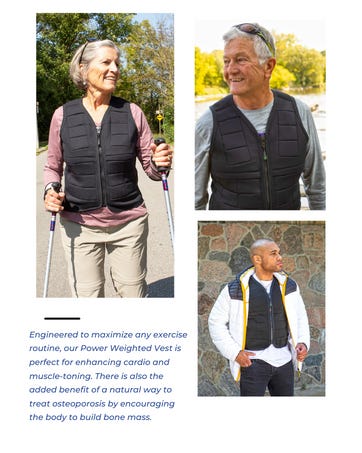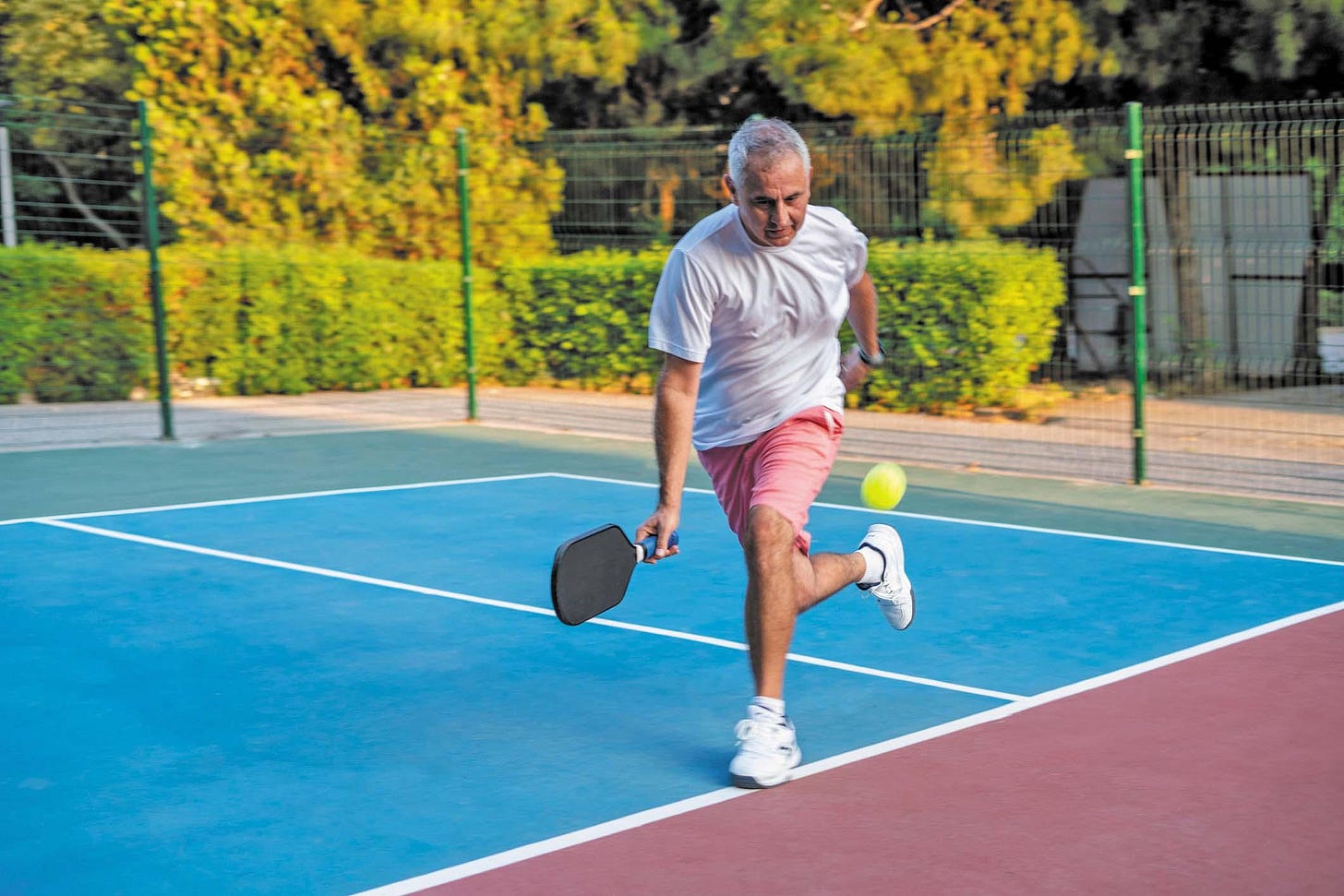I like Big Weights, and I Cannot Lie!
A Closer Look at the Weighted-Vest Craze
One of my patients recently texted me, “Hi Dr. Ali! I heard that weighted vests are good for my bone density! Do you recommend me exercising with a weighted vest?”
Exercise trends always puzzle me, especially in this crazy new world we live in of “viral trends”. The latest exercise fad these days is called “rucking,” which is a term coined by military units for walking with a heavily-loaded backpack, or “weighted-vest,” to allegedly build muscle and increase stamina.
Not to miss an opportunity to make a quick buck, wellness influencers and exercise brands have been releasing video after product promoting this activity as both a solo exercise as well as a community activity done in outdoor clubs and even virtual classes. While on the other hand, I think most military veterans who have trudged hundreds of miles with heavy packs will probably tell you that rucking seems more about pain and punishment than any meaningful fitness gains.
So, should you be trying this new fad?
The TLDR: NO
Concerns About Bone Density
As more people get access to medications like GLP-1’s (Ozempic, Wegovy, Zepbound, etc.), we are noticing concerning problems with loss of muscle as well as bone density in these populations, especially older people. As a result, the medical research community has been looking for ways to head-off this problem before we have an epidemic of GLP-1 users needing hip replacements because their bones are too fragile.
Well, since the problem seems to be the weight loss, why not add that weight back on, at least temporarily? Unfortunately, that doesn’t address the key issues. While weight does help bone density, it does so over a very long period of time, and weight is only a small part of building up bone density. Better than weight, activities like running, dancing, stair climbing, and tennis put stress on bones, stimulating their growth and strengthening. So, bone density responds more to stress than simply to weight.
Case in point:
One of my 70-year-old patients was showing signs of osteopenia, the stage of bone weakness that comes right before osteoporosis. She took up tennis and 6 months later, her bone density improved about 15%. She was confused, but I explained to her that the stress she puts on her legs while playing creates the best environment for bones to get stronger.
But what about the research?
The Medical Literature Does NOT Support Weighted Vests for Bone Density
In June of 2025, JAMA published a great randomized trial to study the effect weighted vest use on bone density in older adults, on average 66 years old, who were undergoing a weight loss treatment. 150 people were randomized to either: weight loss alone (calorie restriction diet), weight loss plus weighted vest, or weight loss plus resistance training. All groups lost weight at about an equal rate, but surprisingly, all the groups also lost bone density at about the same rate too! But maybe they just needed more time you say? Actually, this study was run for an entire year! So, another fad it seems. But just to be sure, let’s check one more study and see …
This study is a little older, coming from 2017, and looked at essentially the same parameters, though they excluded the resitance training group. In this study, 37 older adults, with a mean of about 70 years of age, with obesity as measured by a BMI of about 35, did a five-and-a-half-month diet (1100-1300 cal/day). 20 were randomized to the diet+weighted-vest group and the remaining 17 did only the diet. Those wearing the vest did so for an average of 10+ h/day, and weight was added incrementally to match the amount of weight lost. The result: no significant changes in bone density or biomarkers was observed between the two groups.
One other study took things a lot further by studying exercising, specifically jumping or plyometrics, with a weighted vest over a period of 5 years in 18 postmenopausal women with a mean of about 64 years of age. So, only 9 women were in the vest+plyomerics group, and the other 9 were just asked to do some exercise, but not directed to do jumping. They did see a greater increase in bone density in the vest group, but the real question is whether the gains were due to the plyometric type of exercises (jumping) or did the vest add anything significant. Furthermore, the small number of the study didn’t provide a great deal of power either.
Conclusions:
So, if you’re going for that “ICE-look” and don’t mind the risk of all that added weight destroying your joints, as noted from this study in the journal Peer, then maybe you should join the sheep who are shelling out their hard earned cash for a weighted vest. But if your goal is to protect your bones from weight loss, or from aging in general, my recommendation is to start some gentle plyometric type of exercises at least twice a week.
To Your Health,
Dr. Ali
References:
1 - Beavers, K. M., Lynch, S. D., Fanning, J., Howard, M., Lawrence, E., Lenchik, L., Shapses, S. A., Weaver, A. A., Wherry, S. J., Zamora, Z., Nicklas, B. J., & Beavers, D. P. (2025). Weighted Vest Use or Resistance Exercise to Offset Weight Loss-Associated Bone Loss in Older Adults: A Randomized Clinical Trial. JAMA network open, 8(6), e2516772. https://doi.org/10.1001/jamanetworkopen.2025.16772
2 - Kelleher, J. L., Beavers, D. P., Henderson, R. M., Yow, D., Crotts, C., Kiel, J., Nicklas, B. J., & Beavers, K. M. (2017). Weighted Vest Use during Dietary Weight Loss on Bone Health in Older Adults with Obesity. Journal of osteoporosis and physical activity, 5(4), 210. https://doi.org/10.4172/2329-9509.1000210
3 - Snow, C. M., Shaw, J. M., Winters, K. M., & Witzke, K. A. (2000). Long-term exercise using weighted vests prevents hip bone loss in postmenopausal women. The journals of gerontology. Series A, Biological sciences and medical sciences, 55(9), M489–M491. https://doi.org/10.1093/gerona/55.9.m489
4 - Kern, A. M., Papachatzis, N., Patterson, J. M., Bruening, D. A., & Takahashi, K. Z. (2019). Ankle and midtarsal joint quasi-stiffness during walking with added mass. PeerJ, 7, e7487. https://doi.org/10.7717/peerj.7487



